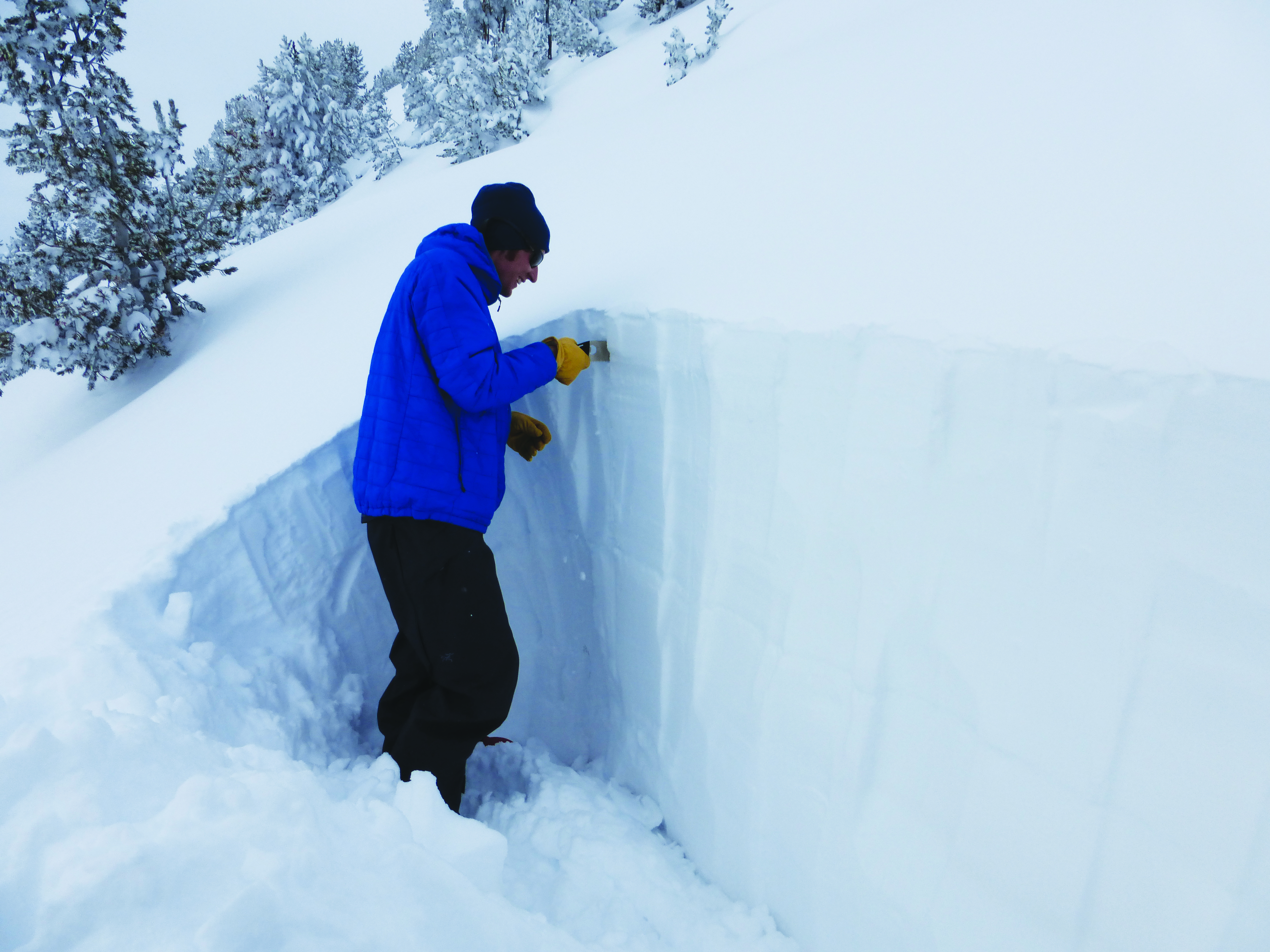Dig and communicate
By Eric Knoff EBS Contributor
Snow ties the backcountry community together, and sometimes it ties us to avalanches. Taking the time to dig a snow pit and assess snow stability provides valuable information and generates conversation between group members. Good communication leads to better decision making in avalanche terrain.
Snow pits are often dug on slopes less than 30 degrees steep with a similar aspect and elevation to the slope you plan to ride. It isn’t necessary, or prudent, to dig on slopes steeper than 30 degrees to get an accurate representation of the snowpack on steeper slopes. Your exposure to avalanche terrain should be minimal when digging a snow pit.
Snow pits are easy to dig and often take less than 15 minutes. A standard pit ranges from 1.5 to 2 meters wide and 1 to 1.5 meters deep. When the snowpack is less than 1.5 meters deep it’s best to dig to the ground. When the snowpack is deeper that 1.5 meters it’s not as important to expose snow at the ground because skiers and riders are less likely to impact weak layers buried that deep.
When digging a snow pit, make sure the front and sidewalls of the pit are clean and smooth, allowing for accurate examination of different layers. Inspecting snow stratigraphy requires feeling with your hands the different layers from top to bottom. A hard layer of snow over a softer, weaker layer is a poor snowpack structure. A poor structure can produce unstable conditions and increased avalanche danger.
A more thorough look at the relationship between layers involves stability tests, which require isolating a column of snow and applying force through a series of loading steps. The most common stability test is the extended column test, or ECT.
An ECT involves isolating a column of snow 30 centimeters wide by 90 centimeters long and applying force to a shovel on either end of the column. Standard loading steps are done by applying 10 taps from the wrist, 10 from the elbow and then 10 from the shoulder. If a fracture initiates on a buried weak layer and propagates to the other end of the column, this is an unstable result and steep slopes should be avoided.
Taking time to dig a snow pit helps a group come together and communicate in an environment that allows individuals to voice their opinions about snow stability. If one member feels uncomfortable about snow conditions, the group should defer to the most conservative approach.
The primary purpose of digging a snow pit is to determine snowpack stability, but it also serves to increase communication within the group. Taking time to investigate snow stability and discussing it with your partners is a great way to make safe and informed decisions in the backcountry.
Eric Knoff is an avalanche forecaster for the Gallatin National Forest Avalanche Center. He’s been a public forecaster the past seven winters, and also spent four seasons as an avalanche forecaster for the Going-to-the-Sun Road plowing operation in Glacier National Park.
Visit mtavalanche.com to view the daily avalanche advisory for southwest Montana and send your snowpack observations to mtavalanche@gmail.com.













